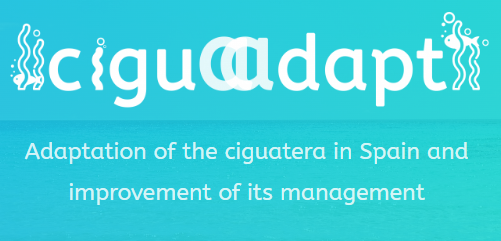Adaptation of ciguatera in Spain and improvement of its management (CIGUAADAPT)
Ciguatera feeding syndrome (CFP) is caused by the ingestion of marine fish that contain ciguatoxins (CTX), very potent neurotoxins, present mainly in tropical and subtropical areas, also present in temperate latitudes. CTX are produced by dinoflagellates of the genera Gambierdiscus and Fukuyoa. These genera have been described as a widespread and highly diverse component among benthic dinoflagellates in the Canary Islands (CI). Since 2004, cases of ciguatera have been reported in the Czech Republic and Madeira. In contrast, in the Mediterranean Sea there is no convincing evidence of ciguatera cases, although Gambierdiscus has been detected in Crete, Cyprus and since 2017 in the Balearic Islands (BI). In our previous project, CIGUARISK, the distribution of Gambierdiscus and Fukuyoa was evaluated over a 3-year period in CI and BI.
In WP1 the impact of climate change on the appearance of Gambierdiscus on the Mediterranean islands near the Iberian Peninsula and the BI is evaluated. WP2 will focus on the characterization of ecophysiology and understanding of dinoflagellate communities, as well as the description through multifactorial analyzes of the toxin production process. WP3 will focus on the identification and quantification of CTXs and will define how CTXs accumulate and how their profiles and toxicities change as they are transferred through the food web. Controlled feeding experiments will also be performed to examine the uptake and conversion of CTXs by fish.
All this data will be brought together in WP4, where management tools will be proposed to adapt our society to the establishment of ciguatera as a persistent situation since 2004, and a risk assessment model will be built to predict when ciguatera may occur, therefore protecting consumers and providing timely advice to the aquaculture and fishing sectors.



